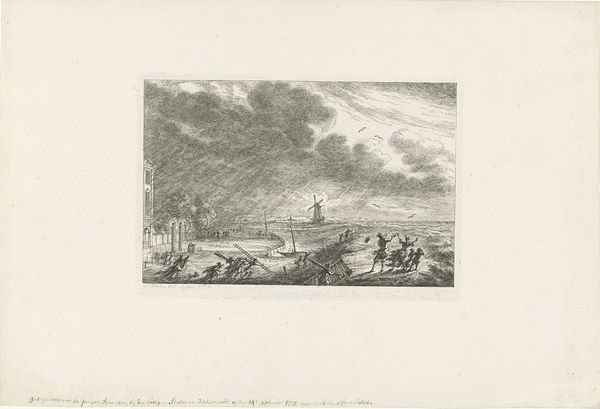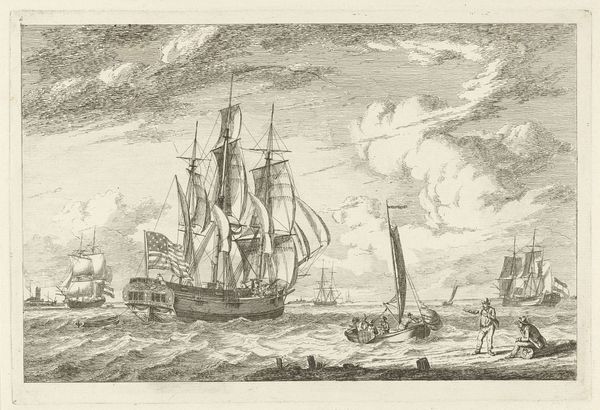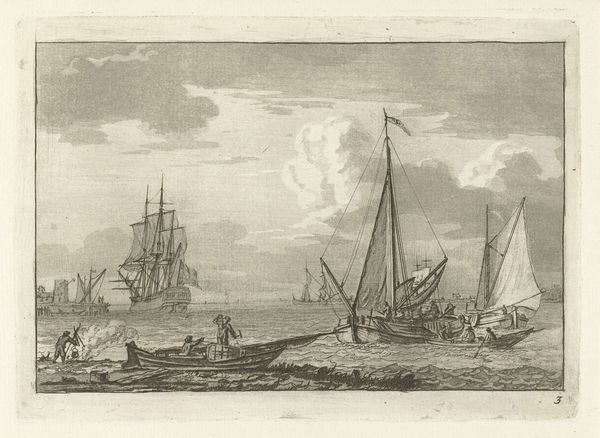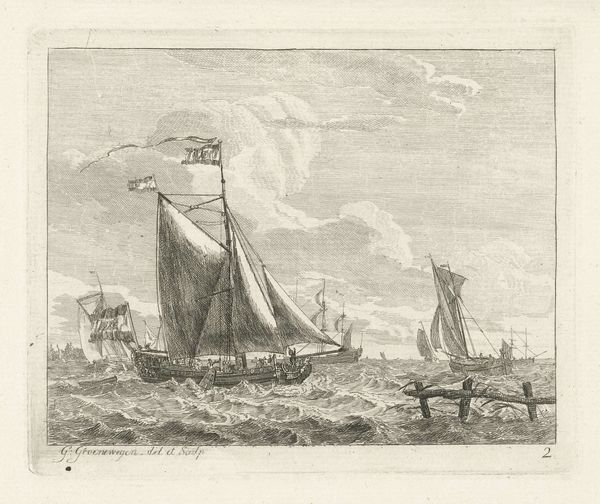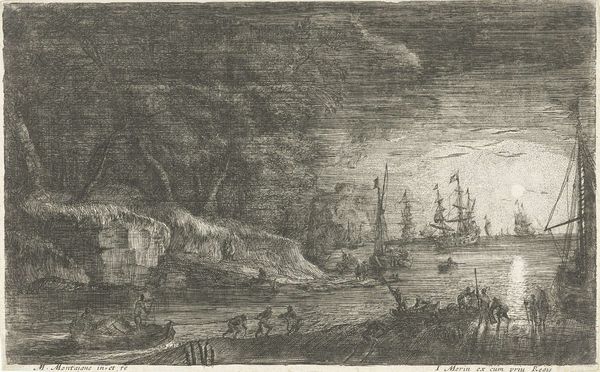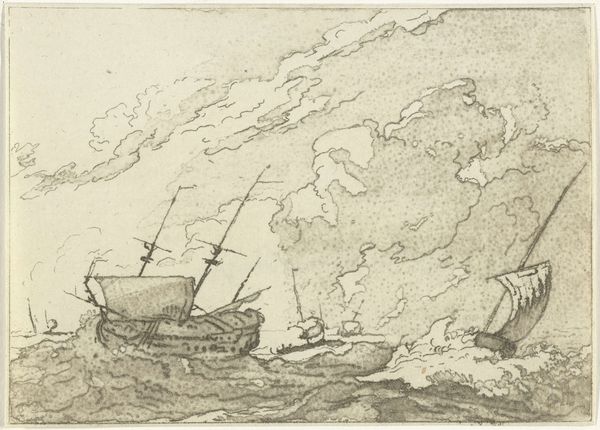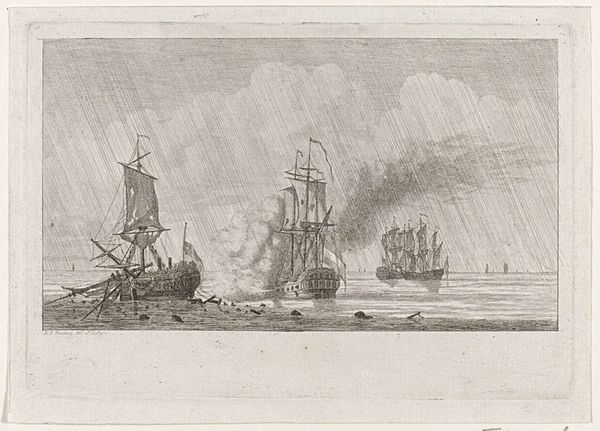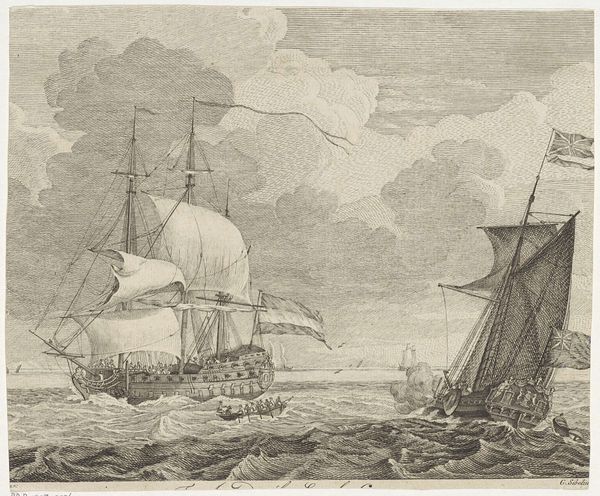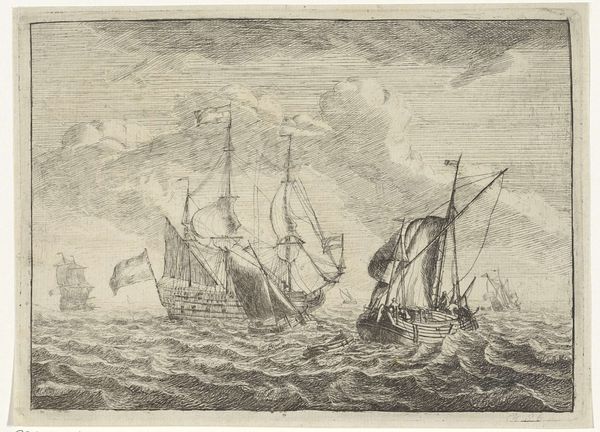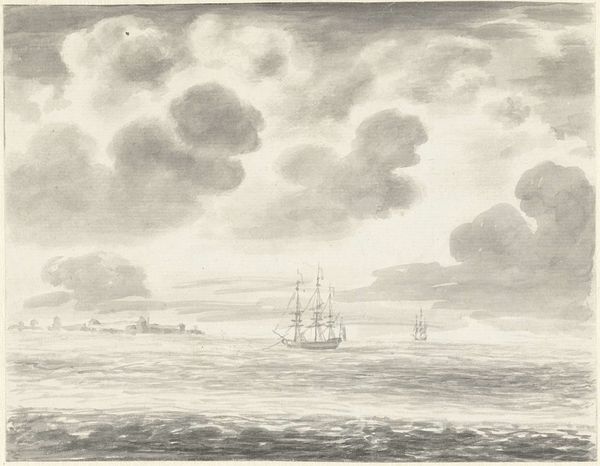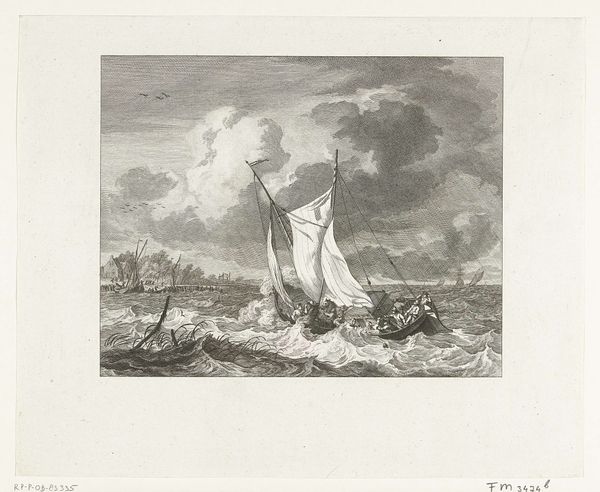
drawing, print, etching, paper
#
drawing
#
baroque
# print
#
etching
#
landscape
#
paper
Dimensions: 123 × 272 mm (plate); 125 × 274 mm (sheet)
Copyright: Public Domain
Curator: Wenceslaus Hollar created this etching, “Galley,” in 1665. Look at those dramatic waves. Editor: My first impression is one of almost overwhelming turbulence. There's a real sense of the power of nature here, quite threatening, almost as if it wants to swallow these ships whole. I'm struck by the scale of the waves versus the apparent fragility of the vessels. Curator: Hollar was known for his meticulous attention to detail and his skill in capturing the essence of a place or event. This print, housed right here at the Art Institute of Chicago, is an excellent example. It offers insight into maritime conditions, not just the appearance but, as you said, that feeling of precariousness at sea in the 17th century. Considering colonialism, there’s the uneasy feeling that this is where labor meets its unfortunate end in pursuit of Western progress. Editor: Precisely, the social implications resonate deeply. One wonders about the individuals onboard, their fears, their fates—especially those coerced or enslaved aboard those galleys. We cannot disassociate the imagery from the brutal realities of maritime trade and power during this era. These aren't simply picturesque ships braving the storm; they are instruments in larger political and economic dramas that hinged on the exploitation of human lives. The image's intensity challenges viewers to reckon with these multifaceted meanings and power dynamics. Curator: And you see how he captures that light breaking through the stormy sky? This illuminates those very ships and the waves threatening to consume them, reflecting the baroque love for spectacle, but there’s this darker, implicit critique woven into it. The ships aren't romanticized; they appear vulnerable, caught in forces beyond their control. The landscape, here, isn’t simply a setting; it's a stage for the performance of power and peril. Editor: The contrast does seem to be highlighting tensions; on the one hand you have this supposed symbol of mastery, and then the untamable power of the ocean. The print encourages a dialogue about environmental impact as well as global socioeconomics that persists. This is a space where different perspectives intersect— the natural world and Western expansion. Thank you for the contextual understanding, and, ultimately, an enriching exploration of "Galley". Curator: Thanks to you for framing our consideration and underscoring the vital reminders this artwork evokes.
Comments
No comments
Be the first to comment and join the conversation on the ultimate creative platform.
